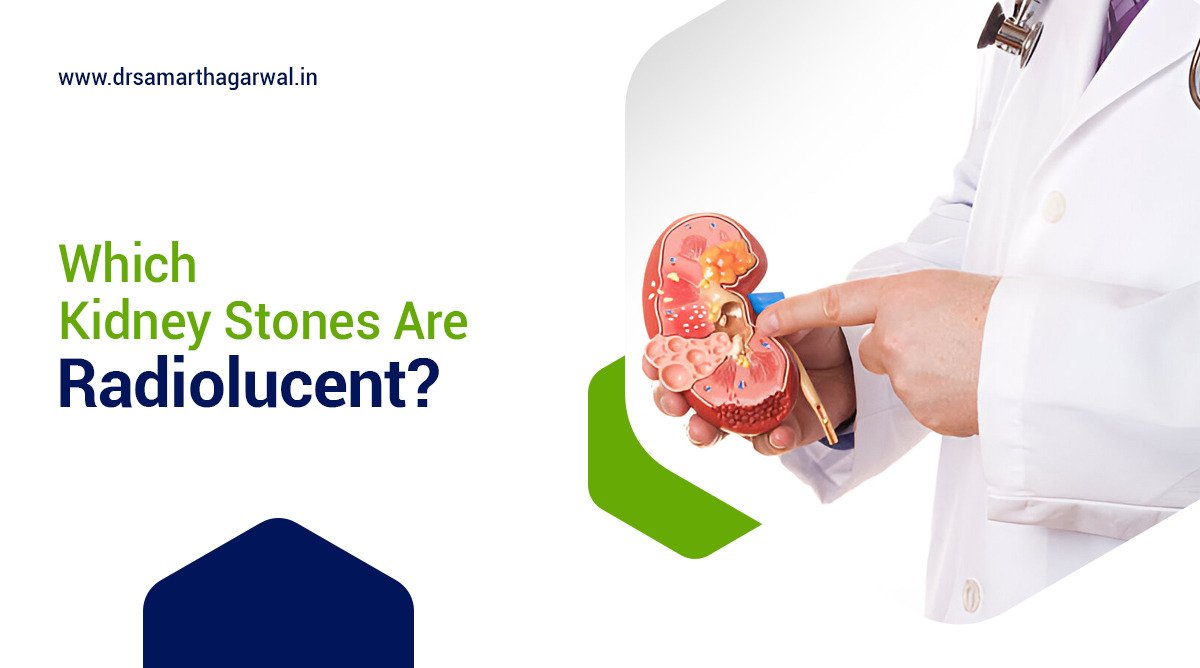Kidney stones can be a painful and complex condition, with various types affecting individuals in different ways. One category that often raises questions is radiolucent kidney stones, which are not visible on standard X-rays. This overview will define kidney stones and their types, help identify radiolucent stones, explore their causes, and outline symptoms to watch for. Additionally, effective treatment options and preventive strategies will be discussed to assist in managing or avoiding this condition altogether. Continue reading to gain a clearer understanding of radiolucent kidney stones and their impact on health.
According to a 2023 cross-sectional study conducted at Guru Teg Bahadur Hospital in Delhi, kidney stones affect approximately 12% of India’s population, with a higher prevalence of 15% in northern regions, matching global rates. The research identified several key risk factors, including male gender, stress (present in 63% of cases), and genetic factors, particularly the VDR gene ff allele found in 83% of cases. The study also found elevated levels of heavy metals like arsenic and lead in patients with kidney stones, and stressed individuals showed three times higher odds of developing stones. The condition accounts for about 1% of emergency hospital admissions, with calcium oxalate stones being the most common type at 60%. The study notably revealed a high recurrence rate, with 98% of patients developing another stone within 25 years of their first episode.
Kidney stones are solid masses that form from substances present in urine, varying in mineral composition and size.
Types of Kidney Stones
- Calcium Stones
- Most common type
- Composed of calcium oxalate or calcium phosphate
- Form when urine contains high levels of calcium, oxalate, or both
- Uric Acid Stones
- Less common than calcium stones
- Occur when there is a high concentration of uric acid in the urine
- Associated with conditions like gout or high protein intake
- Struvite Stones
- Composed of magnesium ammonium phosphate
- Usually develop as a result of urinary infections
- Can grow rapidly and cause kidney damage
- Cystine Stones
- Occur in individuals with cystinuria, a rare genetic disorder
- Result from the improper absorption of certain amino acids
Identifying Radiolucent Kidney Stones
Radiolucent kidney stones are urinary matrix stones that are not visible on standard X-rays, making computed tomography imaging the most effective method for their identification.
These stones are more challenging to diagnose compared to the more common radiopaque kidney stones, which can complicate the differential diagnosis in certain cases.
This complexity necessitates the use of advanced imaging techniques for proper identification and management, particularly in patients with complex medical histories.
How to Determine Radiolucency?
Determining the radiolucency of kidney stones involves various imaging methods, with computed tomography (CT) being particularly effective in identifying urinary matrix stones that may not be visible on standard radiography.
Along with CT scans, ultrasound imaging can be very useful, especially in cases where radiation exposure needs to be minimized.
These imaging techniques differ in their ability to detect different stone compositions, with CT often regarded as the gold standard due to its high sensitivity. The effectiveness of each modality directly impacts the diagnostic process and, consequently, the treatment plans for individual patients.
Case reports emphasize another crucial aspect of imaging accuracy: misdiagnosis can lead to inappropriate management and complications. The information obtained from imaging not only aids in treatment decisions but also enhances patient outcomes.
Causes of Radiolucent Kidney Stones
The formation of radiolucent kidney stones is attributed to specific proteinaceous materials and non-crystalline muco-proteins, which are believed to contribute to the development of these atypical urinary calculi.
Understanding the underlying causes of radiolucent kidney stones is essential for implementing effective management and preventive measures, particularly in patients with type 1 diabetes or chronic kidney disease who are at a higher risk of stone formation.
Contributing Factors and Risk Factors
The formation of radiolucent kidney stones is influenced by several contributing factors and risk factors, including underlying health conditions such as diabetes mellitus, inadequate hydration, and dietary habits that promote stone formation.
Obesity and metabolic syndrome significantly increase the risk of developing radiolucent kidney stones due to their association with elevated uric acid levels. Individuals with diets high in animal proteins, salt, and oxalate-containing foods are at an increased risk. Additionally, a sedentary lifestyle exacerbates these risks.
A person’s medical history is also crucial; recent gastrointestinal surgeries or certain medications may lead to decreased calcium absorption, ultimately resulting in the accumulation of minerals that form radiolucent kidney stones.
Symptoms of Radiolucent Kidney Stones
Radiolucent kidney stones can present a range of symptoms, but they are often associated with conditions such as renal colic, ureteral obstruction, and mild hydronephrosis.
Common symptoms may include intense pain, difficulty urinating, and, in some cases, hematuria.
Recognizing Common Symptoms
Common symptoms of radiolucent kidney stones include acute pain, changes in urinary patterns, and the presence of blood in the urine, which can prompt patients to seek medical help.
These symptoms extend beyond mere discomfort and may indicate a more serious underlying issue that requires immediate intervention.
For instance, the acute, cramping pain reported by patients is often caused by stones obstructing the urinary tract, leading to complications such as urinary tract infections or reduced kidney function.
Changes in urination, such as increased frequency, urgency, or difficulty, may suggest that the body is struggling to process or expel the stones.
Hematuria, or blood in the urine, is a concerning symptom that should not be ignored, as it necessitates further diagnostic evaluation to determine the cause of the obstruction and to assess whether any kidney disease is present, which can result from long-standing untreated radiolucent formations.
Treatment Options for Radiolucent Kidney Stones
Treatment options for radiolucent kidney stones may include endourological interventions, extraction of stones through transureteral basket retrieval, and percutaneous nephrostomy in more severe cases to alleviate urinary obstruction.
Medical and Non-Medical Approaches
Both medical and non-medical approaches are essential for managing radiolucent kidney stones. Medical approaches include medications to relieve symptoms and prevent recurrence, while non-medical strategies focus on hydration and dietary changes.
Individuals affected by these types of kidney stones should adopt a multifaceted approach that addresses both symptoms and the underlying causes of the condition.
From a medical standpoint, doctors may prescribe medications such as alpha-blockers to facilitate the passage of stones or potassium citrate supplements to keep urine alkaline and reduce the risk of stone formation.
Simultaneously, non-medical treatments, such as increasing daily fluid intake to over 2.5 liters and making dietary adjustments to limit foods high in oxalate, are crucial.
Regular exercise and weight management also play significant roles in reducing the risk of recurrence, thereby promoting overall kidney health through an integrated approach.
Preventing Radiolucent Kidney Stones
Preventing radiolucent kidney stones can be accomplished by ensuring adequate hydration, making dietary changes to reduce specific nutrients, and implementing lifestyle modifications.
Effective Prevention Strategies
Preventive strategies for radiolucent kidney stones include ensuring adequate hydration, maintaining a balanced diet that limits stone-forming substances, and scheduling regular check-ups with medical professionals to monitor kidney health.
One of the simplest yet most essential methods to prevent the formation of these stones is to increase fluid intake, as this dilutes urine and reduces the concentration of minerals that contribute to stone formation. Individuals should aim to drink at least eight to ten glasses of water each day.
Incorporating foods rich in calcium, potassium, and magnesium, while decreasing the consumption of salt and oxalate-rich items—such as spinach and almonds—can significantly lower the risk.
Additionally, regular medical assessments, including urine tests and imaging studies, allow healthcare providers to detect potential issues early, facilitating prompt intervention and treatment if necessary.

Contact Dr. Samarth Agarwal if you have any questions or concerns about kidney stones.




